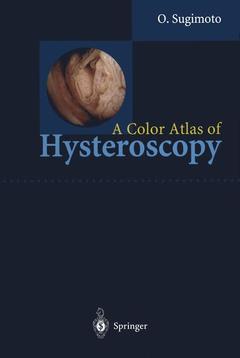Description
A Color Atlas of Hysteroscopy, Softcover reprint of the original 1st ed. 1999
Author: Sugimoto Osamu
Language: English
Keywords
Endometrium; Tumor; Uterus; endoscopy; hormone therapy; hormones; menopause; pregnancy
Approximative price 52.74 €
In Print (Delivery period: 15 days).
Add to cart
Publication date: 01-2012
179 p. · 21x27.9 cm · Paperback
179 p. · 21x27.9 cm · Paperback
Description
/li>Contents
/li>
In America and Europe, carbon dioxide has been widely used as the distention medium in hysteroscopy, in contrast to the widespread use of liquid hysteroscopy in Japan. There are merits and demerits for both media, but the author prefers liquid hysteroscopy because of reduced leakage into the abdominal cavity, reduced glare, and improved debris removal. Although TV images captured with a flexible endoscope are employed for routine work, the author insists on using a single-lens reflex camera with a rigid endoscope for producing wonderfully clear photographs. Having carried out between 400 and 550 examinations a year for the last 20 years, the author has built up an impressive library of quintessential diagnostic images. Over 200 of these photographs are reproduced in color in this atlas to provide a visual guide to uterine abnormalities of unparalleled breadth and clarity.
Fundamentals of Hysteroscopy.- 1 Aim and Significance of Hysteroscopy.- 2 The Panoramic Hysteroscope.- 2.1 The Rigid Hysteroscope.- 2.2 The Steerable Hysteroscope (Hysterofiberscope).- 3 Distension Media.- 4 Practice of Panoramic Hysteroscopy.- 4.1 Time of Practice.- 4.2 Instrument Preparation.- 4.3 Hysteroscopy Procedures.- 4.3.1 Examination of the Intracervical Canal and Uterine Cavity.- 4.4 Special Manipulation Techniques for Optimal Visualization.- 4.4.1 Visualization of the Difficult-to-Dilate Uterine Cavity.- 4.4.2 Visualization at the Time of Persistent Bleeding.- 4.4.3 Visualization of a Large Tumor.- 4.5 Hysteroscopic Biopsy.- 4.6 Hysteroscopy Documentation.- 5 Indications and Contraindications.- 5.1 Clinical Indications for Hysteroscopy.- 5.2 Contraindications for Hysteroscopy.- Hysteroscopic Findings of the Normal and Abnormal Uterus.- 6 The Cervix.- 6.1 Normal Findings of the Cervix.- 6.2 Pathological Findings of the Cervix.- 6.2.1 Nabothian Cyst.- 6.2.2 Endocervical Polyp.- 6.2.3 Submucosal Cervical Leiomyoma.- 6.2.4 Chronic Cervicitis.- 6.2.5 Cervical Synechia.- 6.2.6 Endocervical Malignancy.- 7 The Uterine Body.- 7.1 Normal Findings of the Uterine Cavity.- 7.1.1 Cyclic Changes in Reproductive Age.- 7.1.2 Early Pregnancy.- 7.1.3 Postmenopause.- 7.2 Pathological Findings of the Uterine Cavity.- 7.2.1 Dysfunctional Uterine Bleeding.- 7.2.2 Iatrogenic Bleeding During Long-Term Hormone Therapy.- 7.2.3 Endometrial Hyperplasia.- 7.2.4 Endometrial Carcinoma.- 7.2.5 Nonepithelial Neoplasia of the Endometrium.- 7.2.6 Endometrial Polyp.- 7.2.7 Submucosal Leiomyoma.- 7.2.8 Uterine Adenomyosis.- 7.2.9 Endometritis.- 7.2.10 Foreign Bodies.- 7.2.11 Traumatic Intrauterine Adhesions (Asherman’s Syndrome).- 7.2.12 Early Abnormal Pregnancy-Related Uterine Bleeding.
© 2024 LAVOISIER S.A.S.




